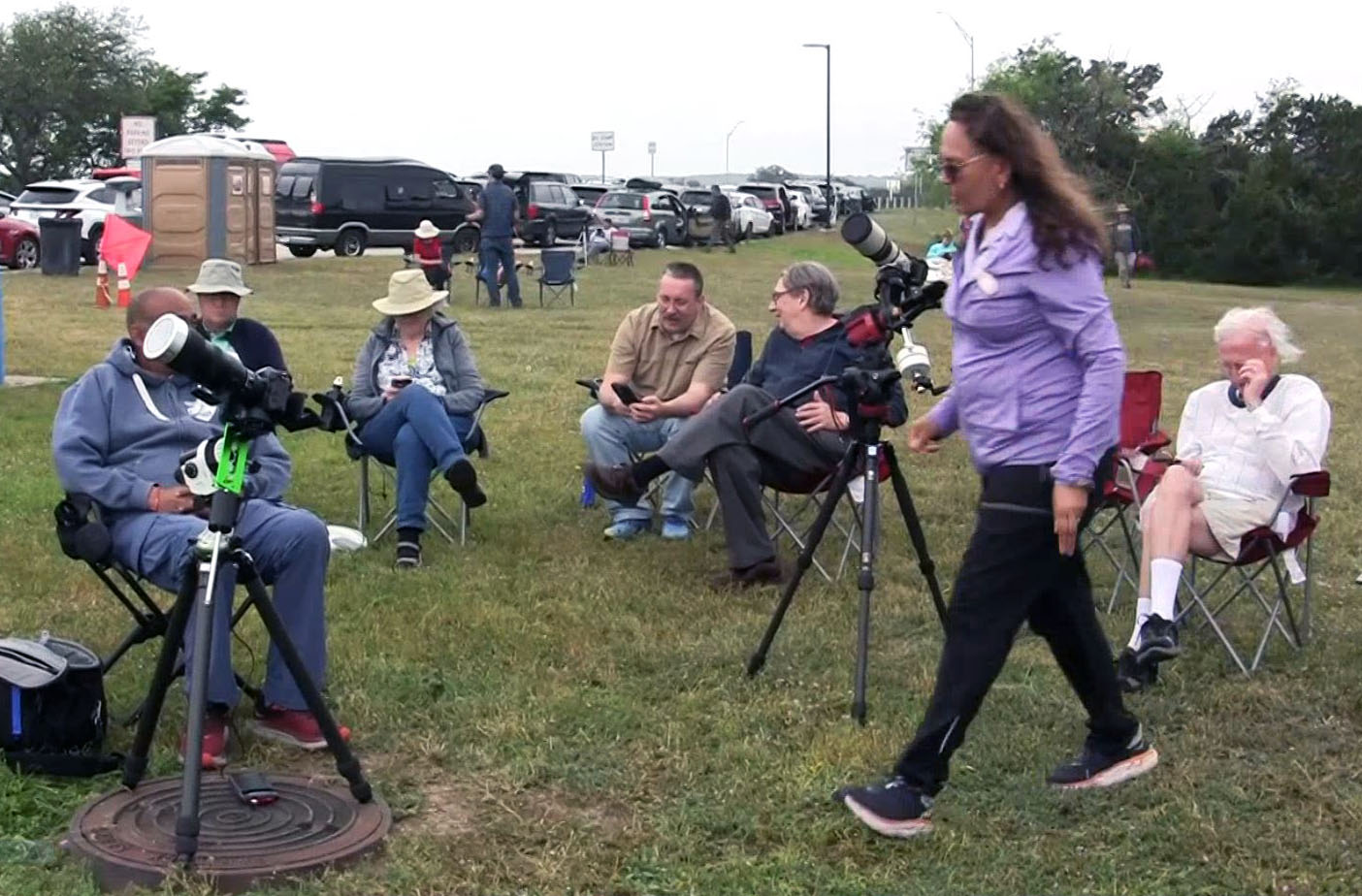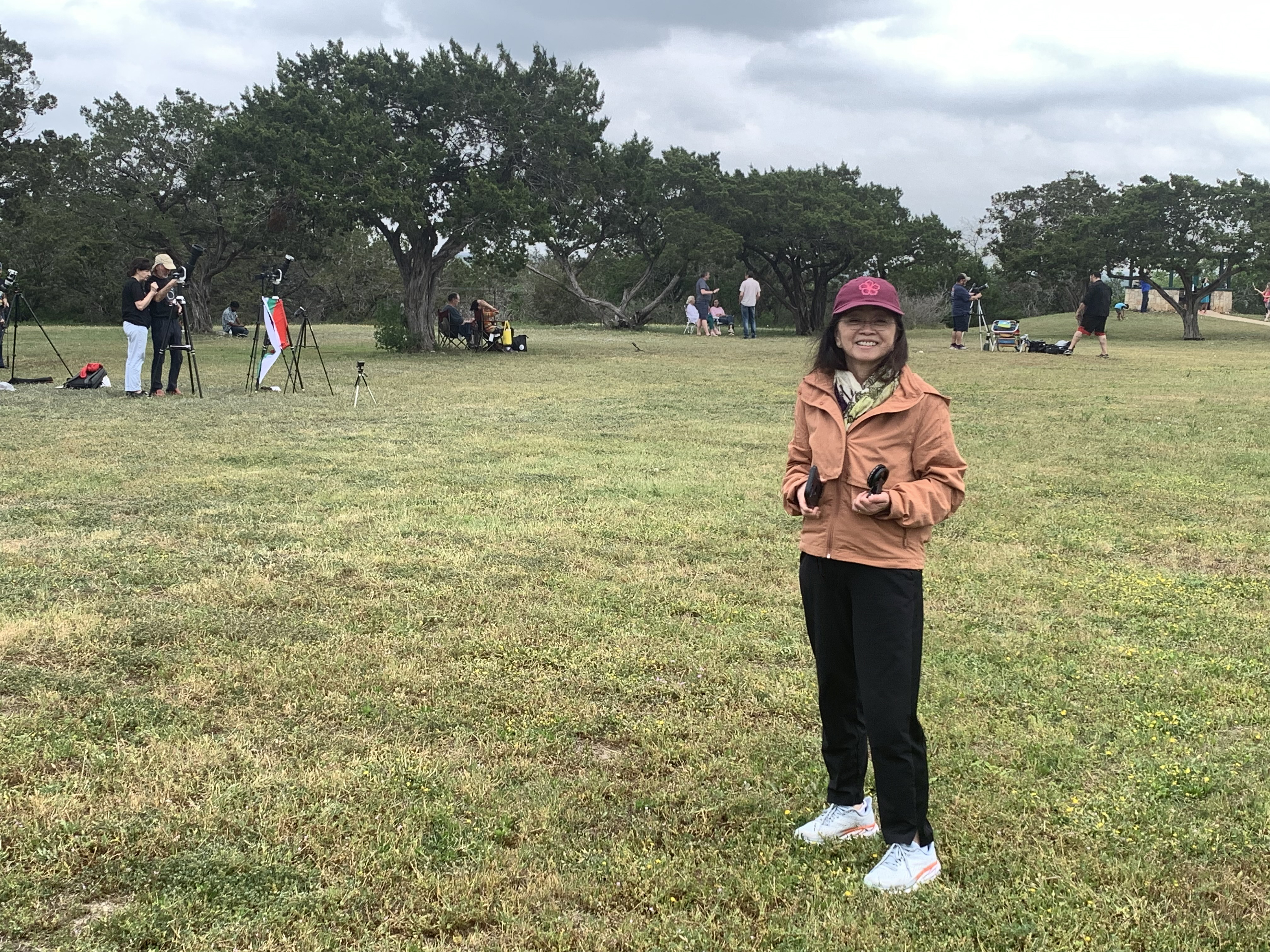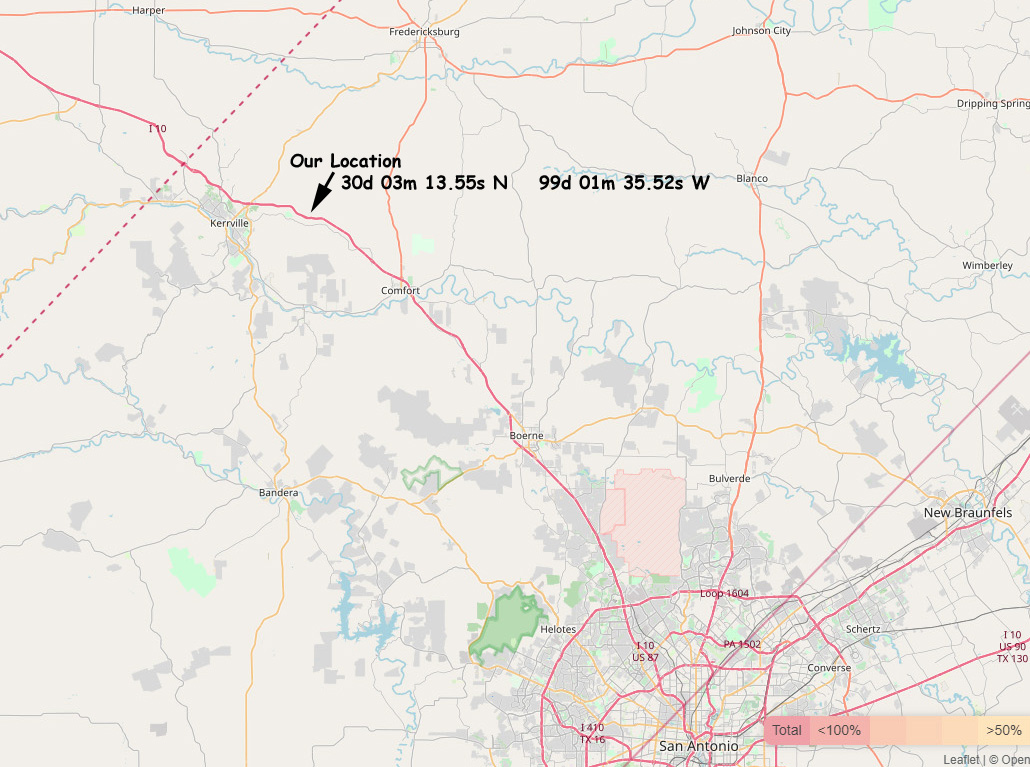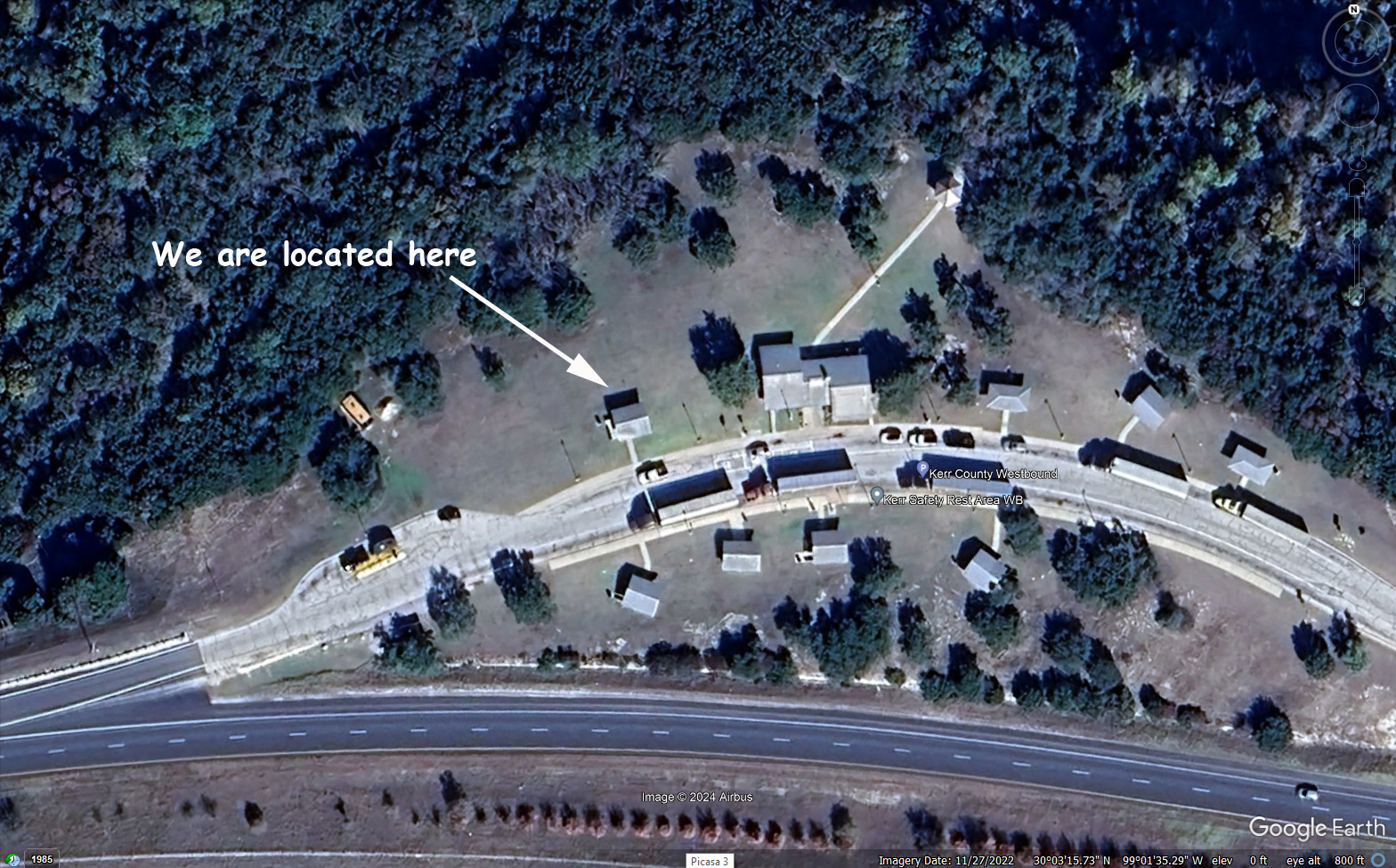Here
is a collection of photographs and video from the April 8th, 2024
total solar eclipse as seen near
Ingram, TX USA. Our friends Himmanshu,
Yogi, Cindy, Ralf, Rick and Tim joined us in San Antonio before,
during and after the eclipse. Conditions in most of Texas
had been quite unpromising several days before the eclipse, but
improved gradually toward the 8th. However, we all remained
guardedly optimistic of seeing such a rare, spectacular
event; we had begun planning for it more than 1 year earlier.
In spite of less-than-ideal weather, great numbers of people were
expected to descend upon even tiny places such as Ingram. Media
mania also had increased "solar eclipse frenzy" to such an extent
that some towns in Texas declared "emergency conditions" for
April 8th, presumably on account of expected traffic. Taking
no chances, on the 6th we scoped out 5-6 possible observation
sites within Ingram, but ultimately decided on a sleepy-looking
Texas Department of Transportation rest stop on I-10, just outside
of Ingram, about 50 miles northwest of San Antonio.
At around 0515 AM on the 8th, we left San Antonio and headed
for the I-10 rest stop. Upon arrival at the site at around
0600, the rest stop was
literally "sleepy-looking": We found
vehicles parked bumper-to-bumper, with many people asleep in their
cars, campers or RVs! Nevertheless, since people were mostly
still asleep, a nice picnic shed was vacant, which we used as our
base for that day.
Ominously, before sunrise it had been completely cloudy, but
morning daylight eventually brought some patchy sunlight.
Several hours later, at eclipse first contact (around noon local
time) only thin, variable clouds prevailed, enabling the first
half of the eclipse to be satisfactorily observed.
Miraculously, at around 1330, sufficient breaks in the clouds
allowed the 4 minutes of totality to be observed. However,
the second half of the eclipse was obscured by thicker clouds,
preventing photography. Nevertheless, the eclipse was still
a spectacular event, thrilling us and the many people who had come
to see it.
As
the videos reveal, the people at our site were very
friendly, enthusiastic and awed by this spectacular
event. A local TV news crew even stopped by and
interviewed us. We especially enjoyed meeting people
from all over America, as well as from Bulgaria and Germany,
who had traveled to see this rare solar display. Who
knows? Perhaps we'll encounter some of them on August
12th, 2026 if we observe the next total eclipse in Spain or
Iceland!





